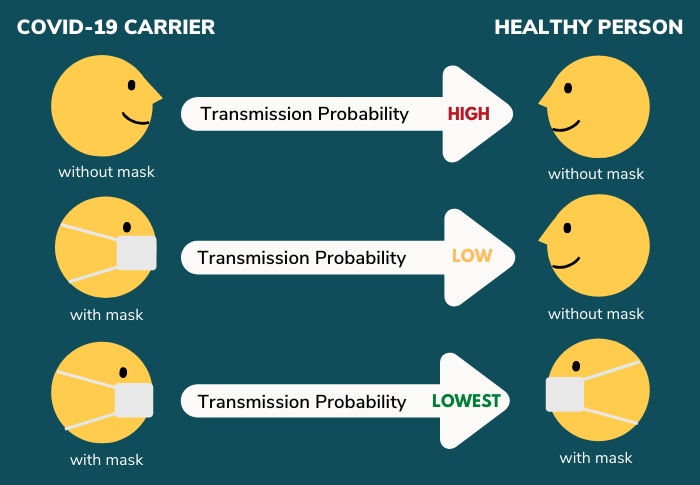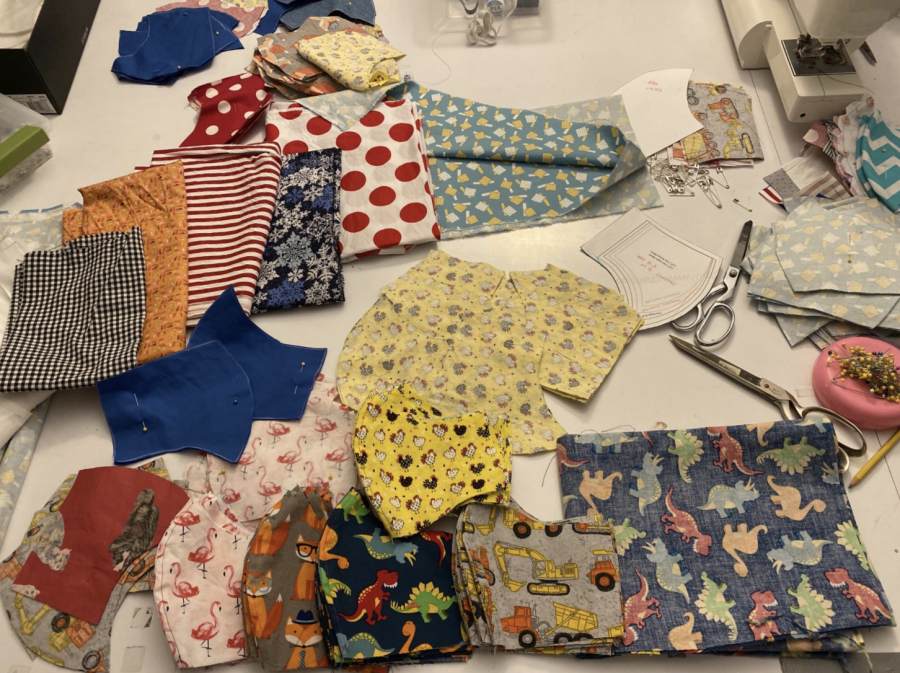For those searching for a DIY quarantine activity, making your own masks may be the solution. Mask-making is a fun activity that goes a long way toward preventing the need to quarantine, helping the environment and allowing people to do everyday activities safely.
A common issue with homemade masks, however, is that few people are aware of what makes a proper mask and how often it needs to be cleaned. Therefore, on the mask creation journey, the first thing one will need to consider is the type of fabric in use. Fortunately, a team named Smart Air Filters has already done the research for you.
Smart Air Filters used a series of household items against particles that are the same size as the virus, and they concluded that 120-thread cotton sheets and cotton tees meet the requirements of stopping the virus and of maintaining breathability.
Once the correct fabric has been selected, the cut and sew process may seem intimidating for those of us who have never touched a needle and thread. Fortunately, the CDC has provided tutorials on how to make a sewn or non-sewn homemade mask. In fact, the CDC also provides a video tutorial with Dr. Jerome Adams, the U.S. surgeon general, on how to make a proper face covering.
Having the proper mask, however, is still just as important as having a clean one.
The CDC explains that masks need to be washed regularly and each day a clean mask is necessary to maintain effectiveness. After all, a common saying among medical professionals is “to use masks the way you use underwear. Put on a clean one every day.
It is recommended that each time your mask is used that it be a clean mask, so if a person has one mask, it’s being washed every day, and if a person has seven masks, it’s being washed once a week.
How to wash your mask is important as well. The CDC says masks are totally fine being washed with our everyday clothing items in the washing machine if washed with warm water, dried on the highest heat setting and left in the dryer until completely dry.
If, however, you’re washing a mask every single day, it may not be ideal to always have to run the washer, so the CDC explains how to properly wash a mask by hand and the main ingredient in this is bleach.
It’s necessary that the bleach is in the range of 5.25%-8.25% of sodium hypochlorite and is not expired. If the bleach passes that test — which household Clorox bleach does — it’s ready for use. Prepare a bowl with a solution of four teaspoons of bleach per quart of room temperature water and soak the mask in the solution for five minutes.
Then, ditch that solution down the drain and rinse the mask with cool to room temperature water and allow it to completely dry out before use. If possible, direct sunlight on the mask is key.
Now that your everyday mask has been finished, it is nice to know how they are also aiding in sustainability. Disposable surgical masks are just that… disposable! So although they are effective, if used every single day, they are being thrown away and creating quite the hefty trail of clinical waste in our environment because they are plastic-based. Plastic lasts up to about 450 years just slowly shrinking, ending up in landfills and oceans but never really going away.

Graphic source: East Alabama Medical Center (https://www.eamc.org/news-and-media/why-is-wearing-a-mask-important)
In fact, since January, this clinical waste has already started to leave its mark. OceansAsia reported an increase in marine debris and microplastics during this period and showed evidence of masks being littered all around cities and beaches.
This is not to say that disposable masks are not to be used. In fact, sometimes they are deemed necessary, but if worn and disposed, they have to be thrown away the right way, just as your eco-friendly masks have to be washed the right way.
Let this be a year to focus on keeping you and your environment clean.
Follow Johnnie Mitchell on Twitter









